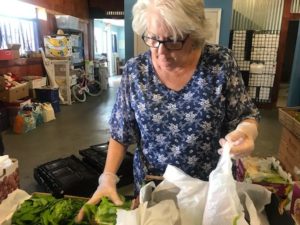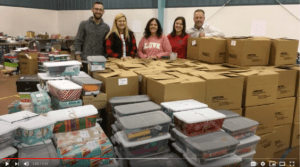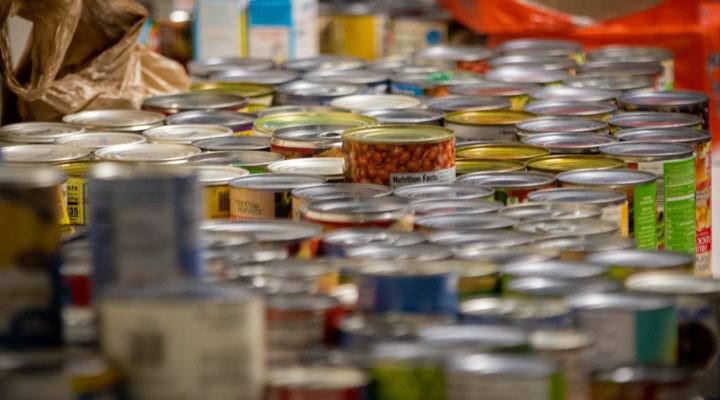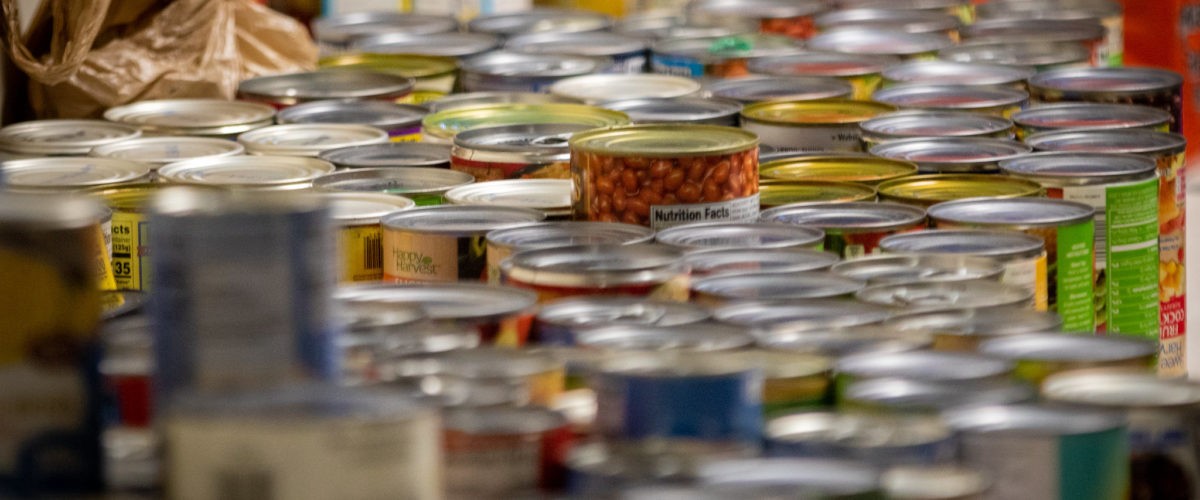Experts predicted food insecurity would skyrocket as the COVID-19 pandemic ravaged the nation’s economy. According to those who regularly minister to the poor and hungry, those predictions have turned out to be accurate.
“It’s bigger than anything we’ve ever seen,” said Jason Coker, national director of Together for Hope, the rural development coalition of the Cooperative Baptist Fellowship.

Jason Coker
Together for Hope partners from Appalachia to the Rio Grande Valley report food banks and pantries being deluged with new and long-term clients facing unemployment, illness and rising hunger, Coker said.
Predicted jumps in coronavirus infection rates this winter combined with the relaxing of government-mandated precautions and a struggling economy are expected to keep food insecurity at high levels.
“Our governor in Mississippi has stopped the statewide mask mandate,” Coker said. “The problem is getting worse.”
In terms of numbers, 40 million Americans were considered food-insecure prior to the pandemic. The figure jumped as high as 70 million by late spring, Jeremy Everett, founder and executive director of the Texas Hunger Initiative and the Baylor Collaborative on Hunger and Poverty, told Baptist News Global in late May.
“I’m expecting that food insecurity numbers are basically going to double during this period,” he said then.
The numbers did just that and more, according to researchers at Northwestern University.
“We find that food insecurity has doubled overall, and tripled among households with children.”
“We find that food insecurity has doubled overall, and tripled among households with children,” according to a NWU survey. The research also found that hunger rates are higher for Black (36%) and Hispanic (32%) households compared to white households at 18%.
“Food insecurity is elevated across all states, with some states experiencing extremely high rates and/or increases in food insecurity,” the June study reported.
The eye test
Since then, food insecurity has escalated, bringing with it more challenges for ministries, Coker said. “It’s getting worse and worse, and our access to that food is getting tougher.”
One way to measure this is through a simple eye test, he said. The eye test includes seeing cars lined up for blocks to receive boxes or bags of food from local food pantries.

Volunteers take delivery of donated food for distribution by Together For Hope, Delta Region. (Photo/TFH/Facebook)
Together for Hope, Delta Region (Mississippi) has opened five additional feeding centers during the pandemic. Linda Stringfellow, the ministry’s regional vice president, has become a food broker for close to 40 other area organizations that have distributed more than $100,000 in food to 3,500 families.
In the Rio Grande Valley, Jorge Zapata, associate coordinator of CBF Texas and founder of the Heart4Kids nonprofit, is working with 6,000 families to provide “untold amounts of food,” he said.
Together for Hope sites in Alabama, Kentucky, North Carolina and other locations are reporting similar trends. “All have shifted and pivoted mostly towards food,” according to Coker.
Hunger among Florida farmers
There was no pandemic-induced shift toward food at Cultivate Abundance, a Together for Hope partner that grows and donates produce to food pantries serving migrant farm workers in Immokalee, Fla.
But a surge of unemployment in the worker population during the coronavirus outbreak has forced the ministry to ramp up production and to help nearby struggling ministries, said Ellen Burnette, executive director of Cultivate Abundance.

Ellen Burnette (Photo/Courtesy of Ellen Burnette)
“We pivoted right off the bat,” she said of the organization she runs with her husband, CBF field personnel Rick Burnette.
The situation they faced was dire.
“Two big food banks that serve our area took a big hit. All the food pantries were needing more food than ever, and there was less food than ever,” Burnette said. “At the same time, all our grocery stores were sold out.”
Farm jobs dried up for the migrants because the bottom had dropped out of the market. “Some of the growers ended up having to abandon their crops or just plow them under. That meant farm workers had less access to job opportunities on a daily basis,” she explained.
In response, the couple has donated their Fridays to food and clothing distribution at a Presbyterian mission and food pantry. Its staff had been overwhelmed by increased demand concurrent with the loss of visiting church volunteers due to the pandemic.
“This is who we had been feeding into with fresh produce,” Burnette said.
Because Cultivate Abundance could not grow enough food to keep up with rising demand, it found unused parcels in town on which to grow produce, collected additional food from local gardeners and obtained donations of fruit, which is abundant in the region.
The ministry also acquired a grant from Dunkin’ Donuts to purchase food from a small farm operation, she said.
Some good has emerged from the process, despite the challenges, Burnette added.
Working at the pantry on Fridays has introduced them to new people in the migrant community. And they have been inspired to launch a soil and seed program to establish gardens on shared properties.
“It pushed us to move faster in some ways than we might have before COVID hit,” she said.
Kentucky creativity
Innovation has been key in the battle against food insecurity in the pandemic.
CBF Kentucky and Together for Hope this summer offered a virtual ride-run-swim and 50-mile hike-walk-run events to raise money for hunger relief, said Keith Stillwell, regional vice president of Together for Hope Appalachia.

Scarlette Jasper, center, with volunteers. (Photo/YouTube)
Proceeds went to Scarlette Jasper’s Olive Branch Ministries, a program serving areas of persistent poverty in south central and southeastern Kentucky, and in Scott County, Tenn.
Jasper said the food insecurity imposed by the pandemic has inspired her to make changes, too.
“I have never been a person who has stocked up on things,” said Jasper, who serve as CBF field personnel. “As far as ministry goes, I don’t have the room to do that. But those food shortages let me know I need to have a little more of those non-perishable things on hand — the things people need.”
This is a lesson learned after trying to help those desperately hungry during the pandemic, she said. “After the stimulus checks came out, we did see that taper off a little bit, but we have seen that ramp back up.”


